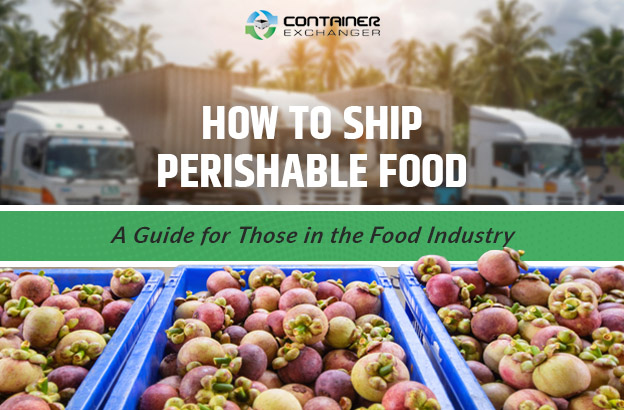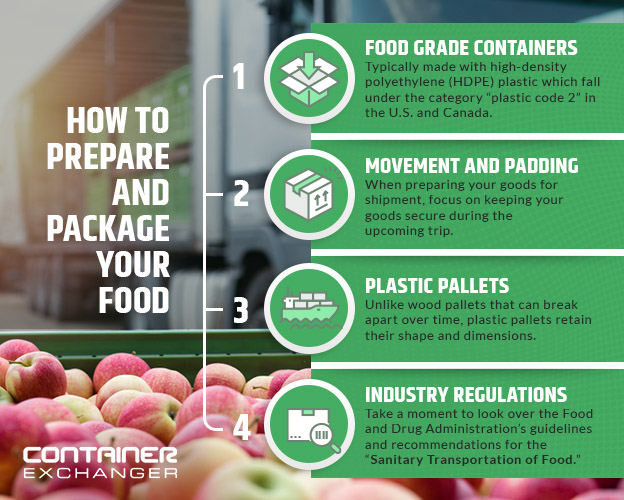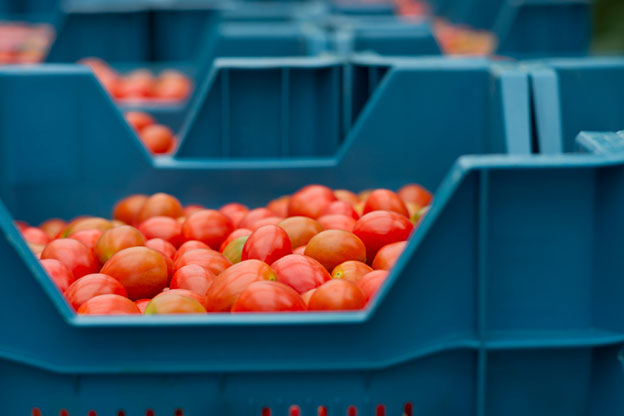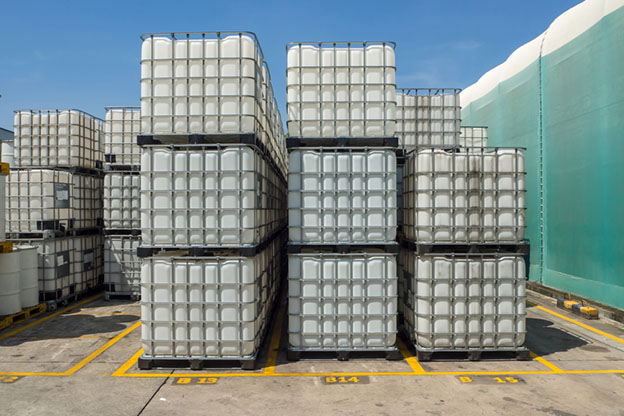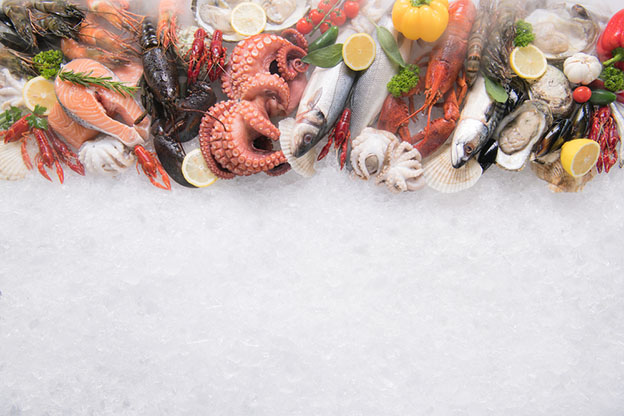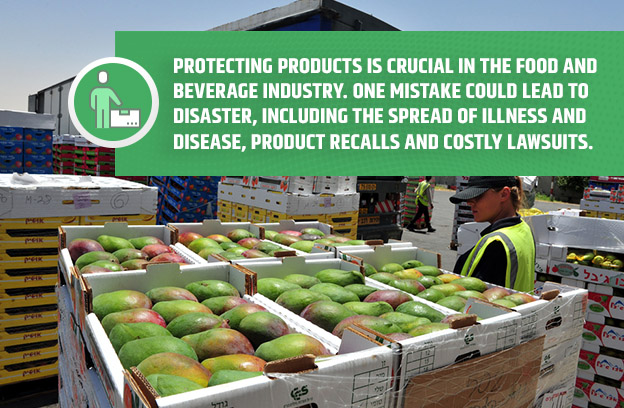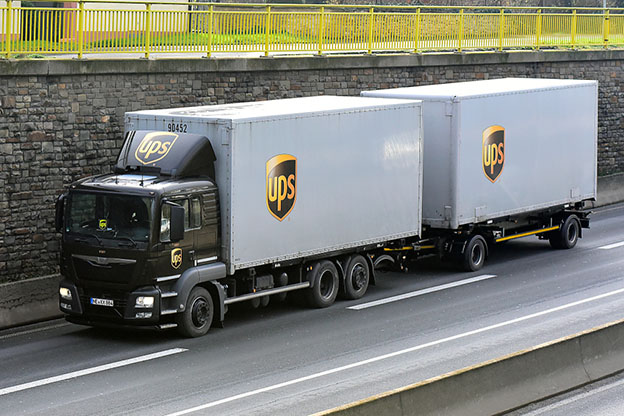When it comes to shipping and transportation, few things could be more important than the food supply chain. These products keep society running, ensuring everyone has access to fresh fruit, vegetables, meat and other essential food and beverage products.
But shipping food and beverages is often much more complicated than shipping room-temperature consumer goods, like electronics, furniture, books and other nonperishable goods. For one, these products tend to be much more sensitive and fragile than other types of goods. The slightest change in temperature could ruin your food and beverage products. The same can be true of excess turbulence, transportation delays and unruly weather.
Plastic Pallets Are Durable and Sustainable
That’s why food and beverage manufacturers need to go to great lengths to protect their merchandise from spoilage and everyday wear and tear. Use this guide to ship perishable food the right way so you don’t have to worry about letting your goods go to waste.
Food Shipping at a Glance
Food processing represents around 15 percent of the value of shipments from all U.S. manufacturing plants. These products fall into dozens of categories, and each one comes with its own considerations.
According to the United States Department of Agriculture, meat processing makes up the lion’s share of the industry, accounting for 24 percent of all food shipments. Dairy comes in second place at 13 percent, followed by beverages (12 percent), grains and oilseeds (10 percent), fruits and vegetables (8 percent) and bakery and tortilla products (8 percent).
Packaging and Preparation
Regardless of what kinds of products you sell, it all starts with the proper packaging. We’ll discuss the different types of containers used to store and transport food and beverage products so you can choose the right equipment for your business.
Food Grade Containers
Most food and beverage manufacturers will use food grade containers to ship their products to other businesses, vendors and consumers. These containers are designed to safely transport food and beverage products. They are typically made with high-density polyethylene (HDPE) plastic which fall under the category “plastic code 2” in the U.S. and Canada. Milk jugs, juice containers and plastic totes are usually made with HDPE.
You can also use food grade polyethylene terephthalate (PET/PETE) containers. These fall under the category “plastic code 1” in the U.S. and Canada. This material is often used to make containers for salad dressing, peanut butter and drinking water.
All food grade containers are made with chemical-resistant materials to improve food safety. Other types of containers may carry small traces of pollutants that could contaminate your food products.
At the end of the day, HDPE is considered the most reliable choice. It’s much more durable than other types of containers. If you’re not sure how to know if your plastic is food grade, use this guide to find out.
Some retailers will use cardboard boxes to ship their food, but this can be a recipe for disaster. Cardboard isn’t known for its durability. These containers tend to fall apart when exposed to moisture, putting your products at risk. Food grade plastic containers are designed to prolong the life of your products. Click here to learn more about the prolongation of the shelf-life of perishable food products.
Movement and Padding
When preparing your goods for shipment, focus on keeping your goods secure during the upcoming trip. For most companies, this means limiting space inside the container. Find a food grade container that is close in size to your products.
To further protect your goods, use crumpled up recycled paper or bubble wrap to get rid of empty space. Cushion your products so they cannot move around or shift in place.
Practice handling these containers inside your facility before sending them out for delivery. Make sure the contents stay in place before, after and during the transportation process.
Plastic Pallets for Loading/Unloading
To improve product handling, use plastic pallets when transporting food and beverage items. Unlike wood pallets that can break apart over time, plastic pallets retain their shape and dimensions. This makes it easier to load/unload your merchandise. The forklift will fit into the slots of the pallet every time for smooth handling. Damaged wood pallets tend to be unstable, increasing the chances of your products tipping over during transit.
Check Out Our Available IBC Totes for Sale
Plastic pallets won’t crumble or leave wood shavings all over your facility, so your employees can navigate the space with more peace of mind. This reduces the risk of trips and falls. These kinds of pallets are also reusable, meaning you don’t have to keep buying more supplies.
When using plastic pallets, keep the container strapped to the pallet so they don’t get separated along the way. Use ratchet straps and plastic wrap to keep the two together every step of the way.
IBC totes tend to be the best choice when shipping large quantities of fluids, grains, oats and other dry goods. These large food grade plastic containers come strapped to a plastic pallet for safe, efficient handling. You don’t have to worry about your products getting separated. The container even comes with a built-in spout for quickly deploying your products in the field or during the manufacturing process. This makes them perfect for food and beverage suppliers and wholesalers. Look for IBC totes for sale to increase the scale and reach of your operations.
Industry Regulations
Before sending off your package for delivery, take a moment to look over the Food and Drug Administration’s guidelines and recommendations for the “Sanitary Transportation of Food.” Your business needs to comply with these regulations in order to keep your customers and business partners safe. The document outlines everything that goes into this process, including shipment inspection, staff training and employee hygiene, all of which can affect the quality of your food products.
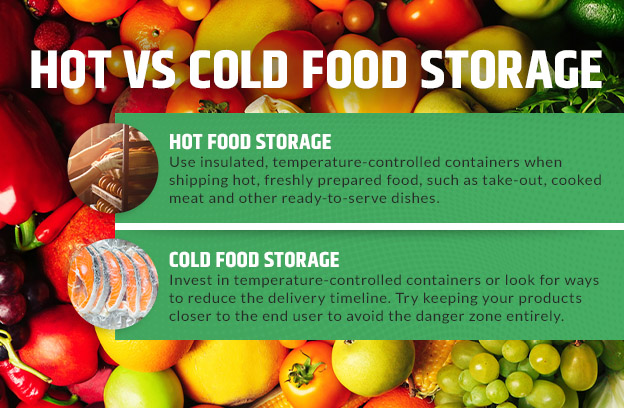
Hot Food Storage
Now we’re going to focus on the subtleties of shipping hot vs. cold food.
Shipping hot food is usually much cheaper and less stressful than shipping cold food. It’s best to use ventilated plastic totes and containers when shipping hot food. Other types of containers may melt when exposed to extreme temperatures.
Bakery trays are perfect for transporting baked goods and fragile items, such as cupcakes, garnishes and individually prepared meals. These trays leave extra room in between each rack. With this, you don’t have to worry about accidentally crushing your goods. The ventilation also gives your food the chance to cool off so they are delivered at the perfect temperature.
Baked goods and fresh produce tend to be more fragile than other types of products. Wrap these items in plastic wrap to prevent bruising, air loss and crumbling.
Use insulated, temperature-controlled containers when shipping hot, freshly prepared food, such as take-out, cooked meat and other ready-to-serve dishes.
Cold Food Storage
Frozen and cold food items tend to be the most expensive to ship and store. A slight change in temperature could cause your products to melt, leaving you and your business partners with a soupy mess that’s beyond salvageable. These items tend to produce condensation when they melt, so waterproof plastic totes tend to be a great choice.
To prevent spoilage, many companies will put their products in insulated temperature-controlled containers. These essentially act like small refrigerators or freezers. When shipping large quantities of frozen goods, some companies will invest in refrigerated trucks, but these can be too costly for some retailers. Instead of investing in a new fleet of vehicles, try packing your plastic containers with ice packs, dry ice and gel packs to keep your products the right temperature.
Dry ice comes with its own safety regulations. Leave room for ventilation or these items may explode. Wear gloves and goggles when handling dry ice to keep your workers safe.
To keep frozen and cold products in place during transportation, many companies will use foam inserts. This is often the ideal choice when shipping ice cream, frozen fish and other loose items.
If there’s a chance the product will melt, wrap it in airtight waterproof plastic to keep these items contained. This reduces the chances of messy spills, leaks and cross-contamination that will ruin the integrity of your products.
When it comes to cold food storage, avoid keeping items in what’s known as the danger zone, anywhere between 40 degrees and 140 degrees Fahrenheit, for more than two hours as this will lead to spoilage. Invest in temperature-controlled containers or look for ways to reduce the delivery timeline. Try keeping your products closer to the end user to avoid the danger zone entirely.
Smart Packaging
Just like the technology we use to process orders and manufacture food products, food packaging continues to evolve at lightning speed. Today’s manufacturers can use the internet of things (IoT) and what’s known as smart packaging to safeguard their products during transit.
Tamper-evident containers are being used to prevent cross-contamination and tampering in the food industry. If someone tries to rip open a container or food product, the system will automatically flag the item so it doesn’t end up in the hands of the consumer. Companies often use tamper detection NFC chips to monitor their products from a distance. This increases consumer confidence by showing shoppers and your business partners you have their best interests at heart.
Protecting products is crucial in the food and beverage industry. One mistake could lead to disaster, including the spread of illness and disease, product recalls and costly lawsuits.
Shipping
Smart packaging is also influencing food and beverage shipping. Time is of the essence when it comes to delivering temperature-sensitive products. If one of your shipments gets delayed, it could lead to spoilage.
That’s why many manufacturers and vendors will use GPS trackers to monitor their shipments in real time. These tiny chips log the location of the shipment as it makes its way through the supply chain. These sensors can also record the temperature of the product.
If the shipment is delayed or products dip below a certain temperature, you and your team will be notified right away. You can then share this information with your business partners, retailers and customers so they can avoid these items or take them out of circulation.
According to UPS, plan for a maximum travel time of up to 30 hours. Many food products are delivered faster than that, but complications can catch you off guard. Even if you expect your goods to arrive at their destination in just a few hours, plan for the worst. The more you prep your food and beverage products, the longer they will survive on the road.
Delivery
It’s best to monitor your food and beverage products as much as possible up until they reach their destination. Small mistakes during the delivery process can endanger your customers and business partners. Be sure to monitor the hand-off as well.
Use smart packaging to make sure your goods are safe for consumption when they arrive at their destination. Train delivery drivers to inspect individual containers before handing them off to the consumer. If some items appear damaged or spoiled, the driver should dispose of these items instead of handing them off to the end user.
Have drivers wear gloves when handing off fresh food or produce to the customer. This will minimize the spread of germs. The novel coronavirus has changed the way we interact with other individuals. Make sure your team is wearing the proper personal protection equipment, including gloves and face masks, when preparing and delivering your products to prevent the spread of disease.
As you can see, transporting food and beverage items is often much more complicated than shipping non-perishable goods. Every item needs to be handled with care to prevent damage, cross-contamination and the spread of food-borne illness. Use this in-depth guide to make sure your products arrive at their destination intact.
Image Credits
Source: Aleksandar Malivuk /Shutterstock.com
Source: KAMONRAT /Shutterstock.com
Source: davooda /Shutterstock.com
Source: DenisProduction.com /Shutterstock.com
Source: jannoon028/Shutterstock.com
Source: Africa Studio /Shutterstock.com
Source: Fotosenmeer /Shutterstock.com
Source: amenic181 /Shutterstock.com
Source: Vytautas Kielaitis /Shutterstock.com
